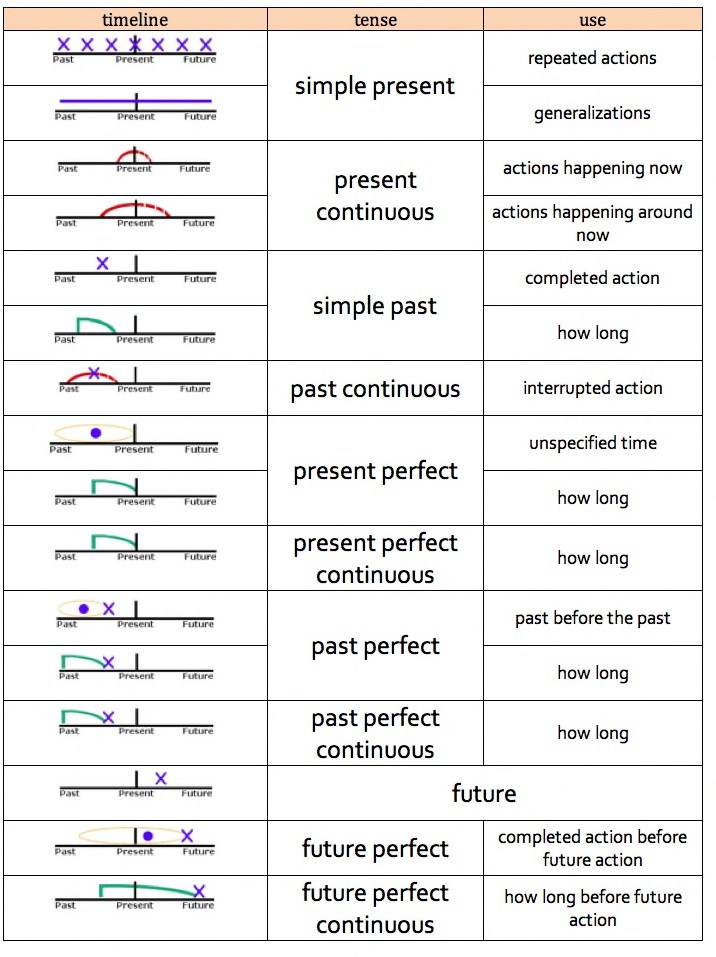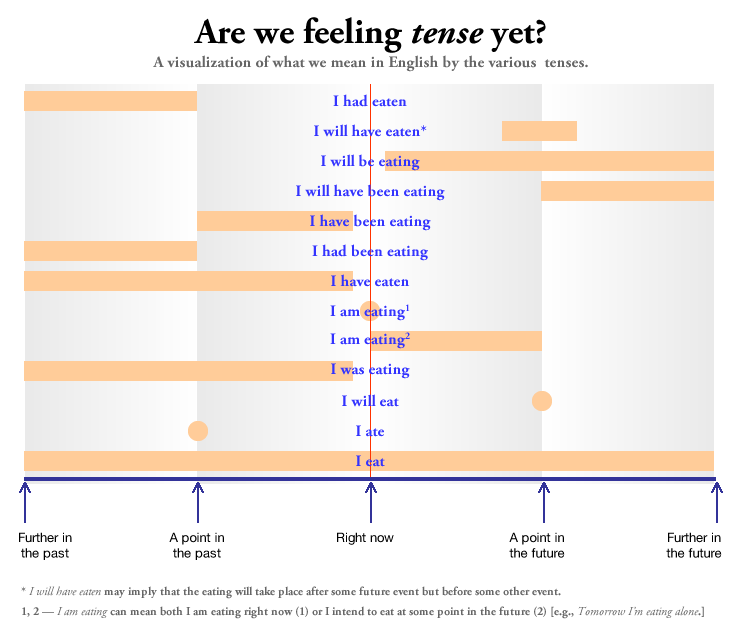Activity 2: Referring to future events in English
Read.
In this activity we will focus on tenses in English only. One tense may have one or more grammatical meanings. In fact, all grammatical tenses have multiple meanings. One meaning may be expressed by one or more tenses. Let's assume that English has twelve grammatical tenses. This number is contentious, but it is the typical number of tenses introduced in text books designed for learners of English language.
Let's see how many ways there are to describe an event (play football) in the future (tomorrow).
Read these statements which each refer to the future.
- Fred will play football tomorrow.
- Fred is going to play football tomorrow.
- Fred is playing football tomorrow.
- Fred plays football tomorrow.
- Fred plans to play football tomorrow.
- Fred is set to play football tomorrow.
This is not a comprehensive list, but you can see that there are many choices. Given that there are multiple ways to express an action in future time, if you want to be able to use English accuracy and appropriately, it is necessary to differentiate between these choices.
 Awareness and defense
Awareness and defense
 Blitz speaking
Blitz speaking
 Interview practice
Interview practice
 Professional development
Professional development



